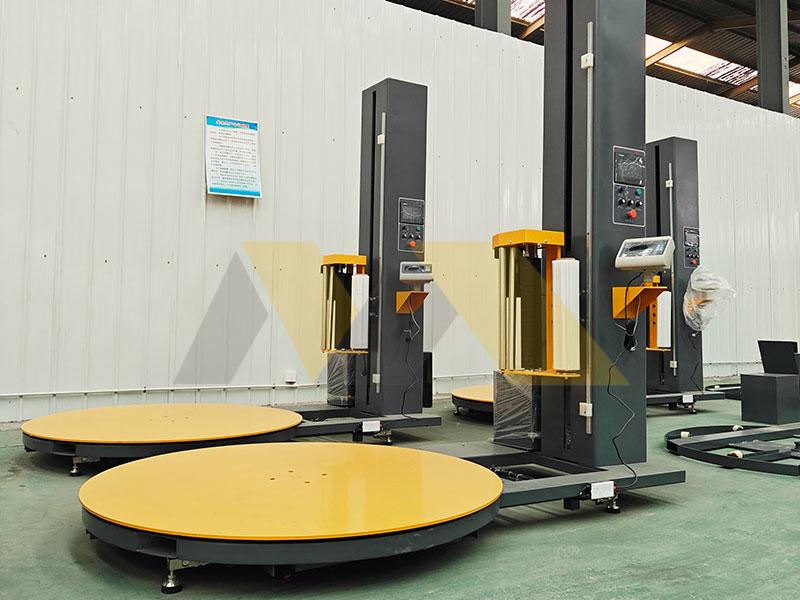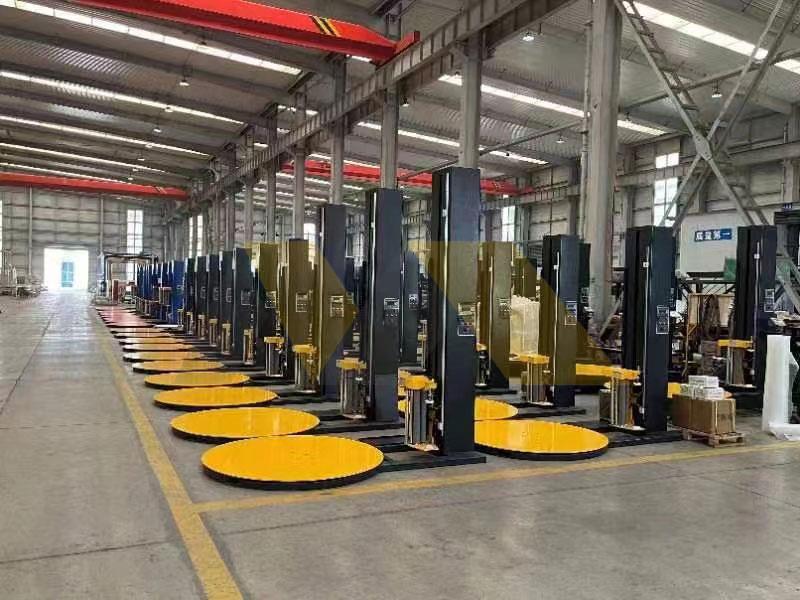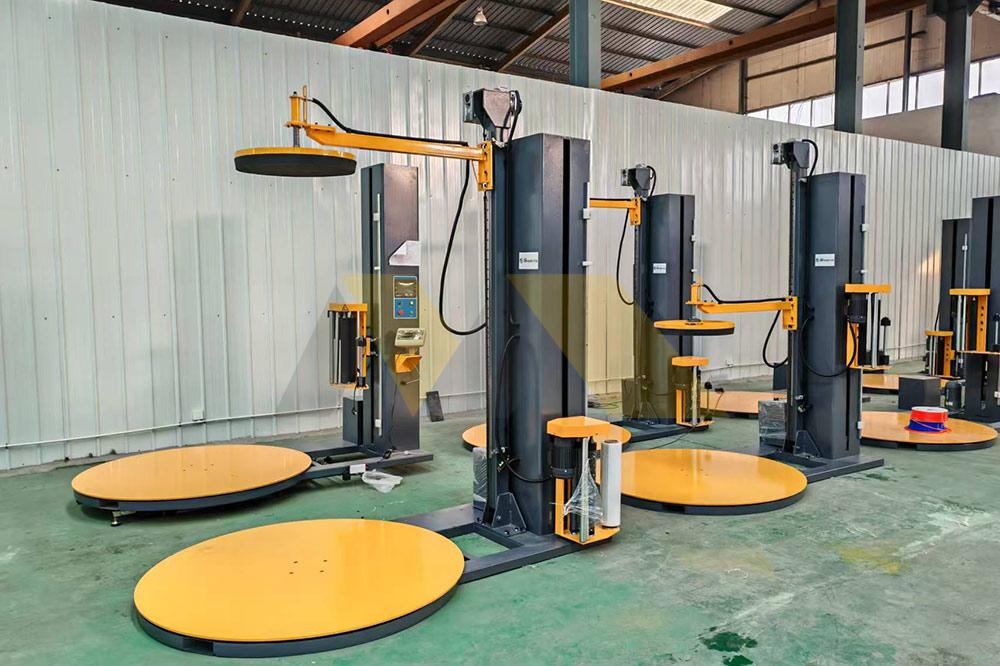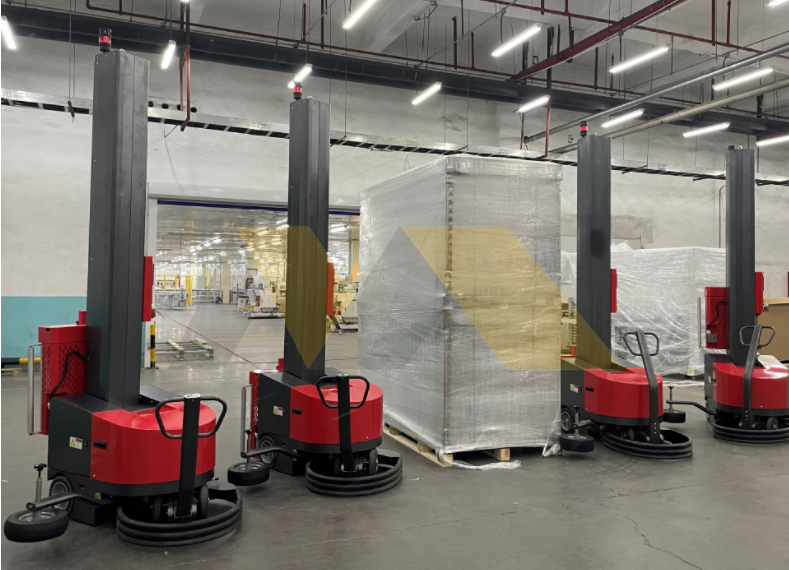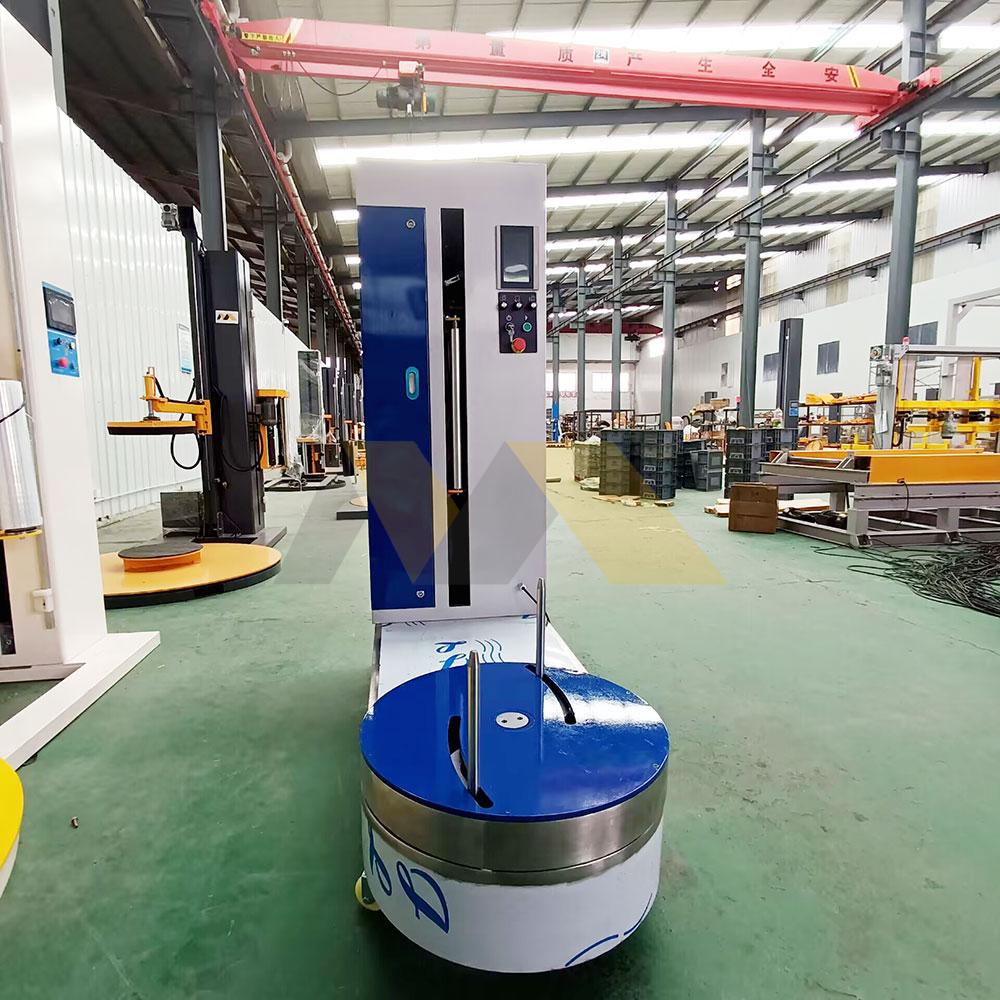
Looking for a luggage wrapper without breaking the bank? That sub-$5,000 price point is tempting, especially for new businesses or lower-volume needs. But you worry – will it actually work reliably, or just cause headaches?
Yes, you can find basic luggage wrapping machines under $5,000, particularly from Chinese manufacturers. However, at this budget, expect compromises. These machines often feature simpler controls, lower wrapping speeds, less robust construction, mechanical stretch instead of powered pre-stretch, and potentially less well-known component brands. Thorough vetting of specifications and supplier reliability is absolutely critical to ensure you get a functional machine that meets your minimum requirements.
Finding a capable machine in this range requires careful consideration. Let’s first understand the benchmark by looking at the machines typically used in demanding environments like airports.
What machine does the airport use to wrap luggage?
Confused by the heavy-duty machines you see effortlessly wrapping bag after bag at the airport? They seem built differently. Let’s clarify what sets them apart.
Airports typically utilize specialized, heavy-duty semi-automatic stretch wrapping machines. These are often turntable models engineered for high throughput, featuring faster rotation speeds, robust construction for near-continuous use, advanced safety features for public spaces, user-friendly controls (often PLCs), and crucially, efficient powered pre-stretch systems (often 200-300%) to minimize film costs and maximize wrap security.
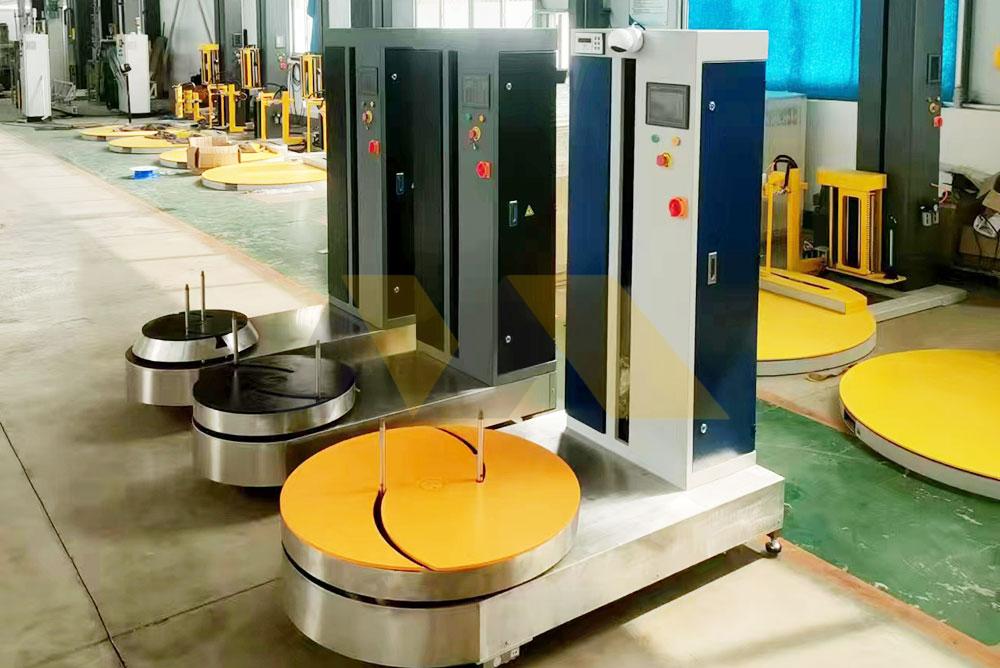
These airport-grade machines represent a higher tier. Understanding their features helps evaluate what might be missing in a sub-$5,000 model. Let’s discuss if a budget machine can realistically handle airport-like demands.
Dive Deeper: Airport Machines vs. Sub-$5,000 Options
When you see a luggage wrapping machine operating smoothly and quickly in a busy airport terminal, you’re usually looking at a piece of equipment designed for performance, durability, and safety – features that typically push the price well above the $5,000 mark. As a manufacturer who produces a range of machines, I understand the engineering and component choices that differentiate these tiers. Let’s compare the standard airport machine with what you might realistically expect for under $5,000.
The Typical Airport-Grade Machine (> $5,000, often significantly more):
- Construction: Heavy-gauge steel frame (e.g., 3mm+ thickness), robust turntable with high weight capacity (often 100kg+), durable mast, high-quality powder coating or paint for longevity. Designed for 16-24 hour/day operation in peak seasons.
- Speed & Performance:
- Fast Turntable Speed: Often 15-20 RPM or higher, adjustable via VFD (Variable Frequency Drive).
- Fast Film Carriage Speed: Quick vertical movement to minimize cycle time.
- Optimized Cycle Time: Aiming for 60 seconds or less per standard bag.
- Powered Pre-Stretch: Essential for film savings and wrap quality at speed. Ratios of 200-300% are common, using dedicated motors.
- Control System: Reliable PLC (Programmable Logic Controller) from known brands (Siemens, Delta, Omron, etc.) allowing for parameter adjustments, cycle counters, potential troubleshooting diagnostics, and consistent control. User-friendly HMI (Human-Machine Interface), often a touchscreen.
- Components: Reputable brands for motors (turntable drive, carriage lift, pre-stretch), sensors (photo-eyes for height detection), VFDs, and electrical components. High-quality slew bearings for the turntable.
- Features: Automatic film cut-and-clamp system (speeds up operation significantly), soft start/stop for turntable stability, top press (optional, for very light or unstable loads), integrated safety features (emergency stops, possibly light curtains or safety bumpers).
- Reliability & Support: Designed for high uptime. Usually comes with a comprehensive warranty and access to responsive technical support and readily available spare parts (because downtime is extremely costly in an airport).
What You Might Find Under $5,000:
Now, let’s be realistic about what manufacturers (including potentially some of our own more basic models, depending on configuration) can offer at this significantly lower price point. Corners have to be cut somewhere.
- Construction: Lighter gauge steel frame, potentially lower turntable weight capacity (e.g., 50-75kg), simpler mast design. May use standard bearings instead of heavy-duty slew bearings. Finish might be less durable. Designed for lower volume or less demanding use cycles. I’ve seen budget machines where the frame visibly flexes under load – a clear sign of light construction.
- Speed & Performance:
- Slower Turntable Speed: Might be fixed or have limited adjustability, perhaps around 10-12 RPM.
- Slower Film Carriage Speed: Increasing overall cycle time.
- Longer Cycle Time: Expect cycle times significantly longer than 60 seconds, maybe 90 seconds or more.
- Stretch Mechanism: Often a mechanical stretch or friction brake system instead of powered pre-stretch. This means lower stretch ratios (maybe 50-150%), leading to much higher film consumption per bag and potentially less consistent wrap tension. Some might offer very basic powered pre-stretch, but likely not the high ratios seen in premium machines. This is one of the biggest differences impacting operational cost.
- Control System: Simpler controls, possibly using relays and timers instead of a full PLC, or a very basic, less-known PLC brand. Limited parameter adjustment, basic button controls instead of an HMI.
- Components: May use less well-known or generic Chinese brands for motors, sensors, and electrical parts. Quality can vary significantly between these brands. Reliability might be less predictable.
- Features: Usually lacks automatic film cut-and-clamp (operator cuts manually). Soft start/stop might be less refined or absent. Top press is unlikely unless added as a significant extra cost. Basic safety features (E-stop) will be present, but advanced ones are unlikely.
- Reliability & Support: Reliability depends heavily on the specific manufacturer and components used. Warranty might be shorter or offer less coverage. Access to spare parts and responsive technical support could be less certain, especially from smaller or less established suppliers. This is a key risk factor for budget machines – saving money upfront can cost more later in downtime and repair headaches.
Is a Sub-$5k Machine Suitable for Airport Business?
Generally, no. For a primary wrapping service in a busy airport environment requiring speed, high volume, and extreme reliability, a sub-$5k machine is unlikely to meet the demands. It would likely be too slow, leading to queues, consume excessive amounts of film, and potentially suffer from frequent breakdowns under continuous use.
However, a sub-$5k machine might be considered for very low-volume airport scenarios (e.g., a small regional airport with infrequent flights) or as a backup machine. But even then, the reliability concerns remain.
For businesses outside of high-traffic airports (like mailrooms, small logistics operations, retail backrooms) with lower volume needs, a well-chosen sub-$5k machine could be a viable starting point, provided you understand its limitations and carefully verify the supplier and specifications. As a manufacturer, we’d guide a client towards a more robust model if they described typical airport demands, even if their initial budget inquiry was lower. It’s about matching the tool to the job.
How much is it to wrap your luggage?
Travelers often wonder about the cost of that plastic cocoon. What’s the typical price range they face at the wrapping station?
Passengers typically pay between $10 and $25 USD (or the local equivalent) to have a single piece of luggage wrapped at the airport. The final price can vary based on factors like the specific airport, the company offering the service, the size of the luggage, and whether any premium options (like extra thick film) are chosen.
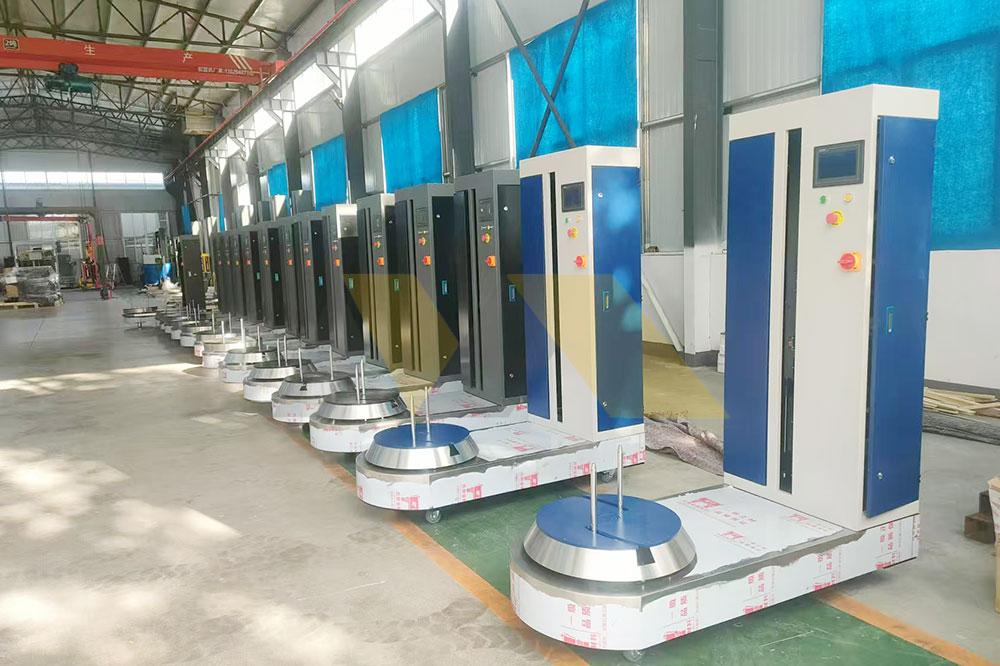
This price range reflects various operational costs. Understanding these helps appreciate why the service isn’t free, and why machine efficiency matters to the provider, even for lower-cost machines.
Dive Deeper: Service Cost vs. Machine Cost
The $10-$25 fee a passenger pays at the airport kiosk is the end result of a business operation that has several cost components. While a sub-$5,000 machine might seem attractive for lowering the initial investment for the service provider, its impact on operational costs and overall profitability needs careful consideration.
Factors Driving the Passenger Price ($10-$25):
- Airport Concession Fees/Rent: Often the largest operating expense, especially in prime terminal locations.
- Labor Costs: Wages for staff operating the machine and handling transactions.
- Stretch Film Cost: A significant consumable expense.
- Machine Amortization: Spreading the purchase cost of the machine over its useful life.
- Maintenance & Utilities: Keeping the machine running and paying for electricity.
- Overhead: Insurance, payment processing, business licenses, etc.
- Profit Margin: The necessary return for the business operator.
How Does a Sub-$5,000 Machine Fit into This Equation?
Lowering the initial machine cost (amortization) seems like an obvious win. If a machine costs $4,500 instead of $15,000, the per-wrap cost attributed to the machine purchase is lower. However, this can be misleading due to the compromises inherent in budget machines:
- Higher Film Consumption: This is critical. A budget machine with only mechanical stretch (e.g., 100% stretch) might use twice as much film per bag compared to a premium machine with 250% powered pre-stretch. If film costs, say, $0.50 per wrap on a premium machine, it could easily be $1.00 or more per wrap on the budget machine. Over thousands of wraps, this difference in consumable cost can quickly dwarf the initial purchase price savings. I always run this calculation with potential buyers – the film savings alone often justify a higher-spec machine within months for high-volume users.
- Slower Speed = Lower Revenue Potential: A slower cycle time (e.g., 90+ seconds vs. <60 seconds) directly limits how many customers can be served per hour. During peak times, this means lost revenue opportunities and potentially longer queues that deter customers. If you can only wrap 40 bags/hour instead of 60+, that’s potentially $200-$500 less revenue per hour at peak, depending on the price per wrap.
- Lower Reliability = Higher Costs & Lost Revenue: Budget machines often use lower-quality components that may fail more frequently. Downtime means zero revenue during that period, plus repair costs (parts and potentially technician labor). An unreliable machine can quickly become far more expensive than its purchase price suggests. We focus on component quality even in our more basic models to mitigate this, but there’s a limit to what’s possible under $5k compared to truly heavy-duty options.
- Reduced Wrap Quality: Inconsistent tension from mechanical stretch or a less sophisticated control system can lead to looser wraps that offer less protection. This can lead to customer complaints or damage claims, hurting the service’s reputation.
The Verdict for Service Providers:
For a serious luggage wrapping business, especially in a competitive or high-traffic environment, a sub-$5,000 machine is likely a false economy. The potential savings on the initial purchase are often quickly eroded by higher film costs, lost revenue due to slow speed, and increased maintenance/downtime expenses.
However, for very low-volume applications, perhaps a small motel offering wrapping as an ancillary service, or a mail center wrapping occasional bulky items (not just luggage), a carefully selected sub-$5k machine might suffice if the limitations are understood and accepted. But even then, calculating the true cost, including film consumption, is vital. As a manufacturer, we aim to be transparent about these trade-offs. We can produce machines in that price range, but we make sure the buyer understands exactly what they are (and are not) getting.
Is it worth wrapping your luggage?
Travelers often debate this: is paying that $10-$25 to wrap luggage actually beneficial, or is it just an unnecessary expense? Let’s weigh the pros and cons.
Yes, for many travelers, wrapping luggage is worth the cost. It provides tangible benefits like protection against scratches, scuffs, moisture, and accidental openings. More importantly, it acts as a significant deterrent against tampering and theft (pilferage). While not foolproof, the added layer offers security and peace of mind, especially when checking valuable items or traveling through certain regions.
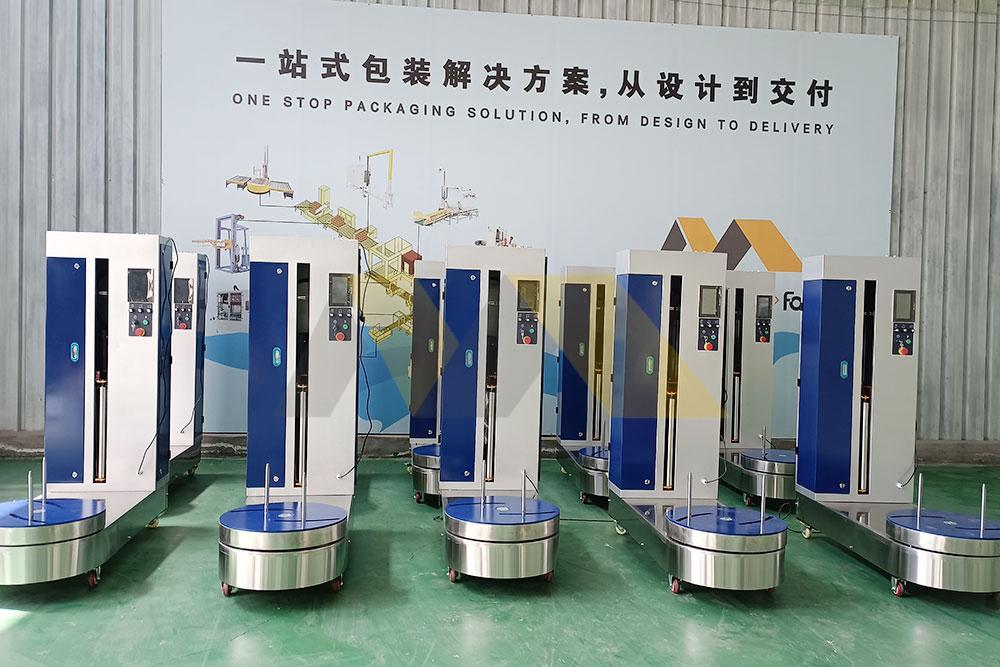
The value proposition relies on the wrap providing effective protection. This connects back to the machine – can a budget model deliver a wrap that truly offers these benefits? Let’s explore.
Dive Deeper: The Value Proposition and the Machine’s Role
The decision of whether wrapping is "worth it" hinges on the perceived value derived from the cost. Passengers paying $10-$25 expect certain benefits. The wrapping machine, regardless of its price tag, is the tool responsible for delivering (or failing to deliver) that value.
Benefits Passengers Expect (Why they find it "Worth It"):
- Protection from Damage: Shielding against scratches, scuffs, dirt, and moisture. Keeping the suitcase looking newer for longer. Preventing minor dings.
- Security Against Tampering/Theft: Making it harder for opportunistic thieves to quickly open zippers or clasps and remove items. Acting as a deterrent. Providing tamper evidence – if the wrap is cut, it’s obvious.
- Preventing Accidental Opening: Holding together overstuffed bags or suitcases with worn latches or zippers. Containing contents if a closure fails.
- Keeping Things Together: Securing loose straps or attached items.
- Peace of Mind: Reducing travel anxiety about baggage handling and security.
Counterarguments (Why some find it "Not Worth It"):
- Cost: The added expense per trip.
- Environmental Impact: Single-use plastic waste.
- Security Theatre: Determined thieves can cut through wrap; security (like TSA) might cut it open anyway for inspection.
- Hassle: Removing the wrap upon arrival. Potential delays if security needs to inspect.
- Luggage Durability: Modern high-quality luggage is often quite resistant to damage and has built-in locks.
How Does a Sub-$5,000 Machine Impact the "Worth It" Equation?
This is where the machine’s limitations become critical to the customer’s perception of value:
- Wrap Quality and Security: A budget machine, especially one with only mechanical stretch or inconsistent tension control, might produce a loose or uneven wrap. A loose wrap offers minimal protection against damage and is far less effective as a security deterrent. If the wrap easily shifts or comes undone, the core value proposition is lost, and the $10-$25 fee feels wasted. A premium machine’s ability to apply high, consistent tension is key to delivering the promised security.
- Film Strength (Related to Stretch): Properly pre-stretched film (possible only with powered systems on better machines) realigns its molecules, making it stronger and more puncture-resistant at a thinner applied gauge. Film applied with low stretch from a budget machine might be thicker overall but potentially less tough and more prone to tearing, again reducing the protective value.
- Reliability = Service Availability: If a budget machine breaks down frequently, the service isn’t available, making it worthless to the passenger at that moment. While this doesn’t affect the concept of whether wrapping is worth it, it affects the practical ability to get it done.
Conclusion for the Service Provider:
If you’re running a wrapping service, using a machine that consistently produces tight, secure wraps is essential to justifying the price you charge and ensuring customers feel the service was "worth it." While a sub-$5,000 machine can apply plastic film, its potential compromises in wrap quality (due to lack of powered pre-stretch, potentially inconsistent tension) might undermine the very benefits customers are paying for. Investing a bit more in a machine capable of high-quality wrapping (even if not top-tier airport speed) might be crucial for customer satisfaction and repeat business. From my factory’s perspective, we try to offer the best possible wrapping mechanism even in our lower-cost tiers, but physics and economics dictate that a $4,500 machine won’t perform like a $15,000 one, especially regarding pre-stretch and tension control.
What is the use of stretch wrapping machine?
Beyond wrapping suitcases at airports, what is the broader purpose of these machines? Understanding their fundamental use helps see where luggage wrapping fits in.
The primary use of a stretch wrapping machine is to unitize and protect products by tightly applying layers of stretchable plastic film (stretch wrap). In industrial settings, this commonly involves securing boxes or goods stacked on a pallet for stability during shipping and storage, shielding them from dust, moisture, and tampering. Luggage wrapping is a specialized application of this core technology.
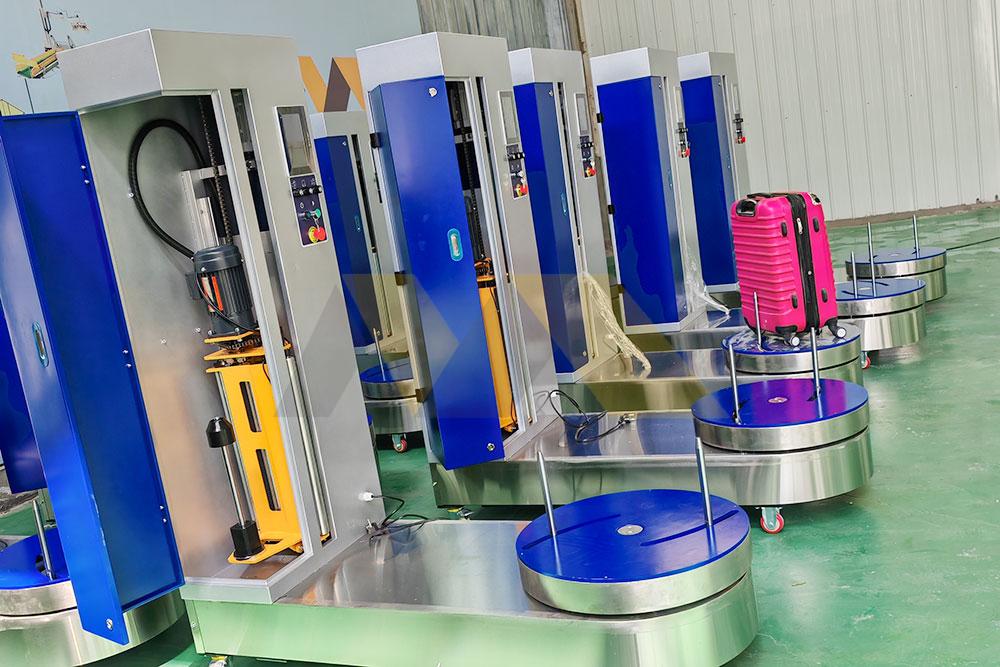
This core function applies across industries. For luggage, the focus shifts to individual items of varying shapes. Let’s see how a budget machine might fit into these different uses.
Dive Deeper: Core Functionality and Budget Machine Suitability
The invention of the stretch wrapping machine revolutionized how goods are prepared for transport and storage. Its fundamental purpose boils down to a few key objectives, achievable through the controlled application of stretch film:
- Unitization/Load Stability: This is paramount in logistics. Wrapping multiple boxes or items on a pallet creates a single, stable unit. The tension of the film holds everything together, preventing shifting, falling, or collapsing during transit on trucks, trains, or ships. This is the primary use case for most industrial stretch wrappers.
- Protection from Environment: The film layers create a barrier against dust, dirt, moisture (rain, humidity), and potentially UV rays (with specialized film). This keeps products clean and dry during storage and handling.
- Protection from Damage: While not heavy armor, the film provides a buffer against minor scratches, scuffs, and surface abrasions during handling. It can also help contain damage if one item within the unit breaks.
- Tamper Evidence/Security: Similar to luggage, a fully wrapped pallet makes it immediately obvious if someone has tried to access the contents. It acts as a deterrent against casual pilferage.
- Improved Handling: A securely wrapped pallet is easier and safer for forklifts or pallet jacks to handle compared to loose items.
How Luggage Wrapping Differs from Standard Pallet Wrapping:
While the core technology is the same, luggage wrapping presents unique challenges:
- Irregular Shapes: Unlike relatively uniform pallets of boxes, luggage comes in all shapes and sizes (suitcases, backpacks, duffels, odd-shaped items). The machine needs to adapt tension and coverage accordingly.
- Individual Items: Wrapping single items rather than a large unitized load.
- Higher Aesthetic Requirement: Passengers expect a neat, clean wrap.
- Speed Demand (in Airports): Much higher throughput needed per machine compared to many industrial settings where wrapping might be intermittent.
- Focus on Surface Protection & Pilferage: These are often more critical for luggage than sheer load stability (though preventing accidental opening is related).
Where Does a Sub-$5,000 Machine Fit?
Considering the core uses and the demands of luggage wrapping, a sub-$5,000 machine’s suitability varies:
- Low-Volume Industrial/Warehouse Use: Potentially Suitable. For businesses wrapping only a few pallets per day, or irregularly shaped items infrequently (e.g., bundling pipes, wrapping furniture for storage), a basic, slower machine with mechanical stretch might be perfectly adequate. The lower speed isn’t a bottleneck, and film cost is less critical if volume is low. Reliability is still important, but the impact of downtime might be less severe than in a high-volume logistics hub. Many of our basic models are sold into these types of applications.
- E-commerce Fulfillment (Small Scale): Possibly Suitable. Wrapping individual large boxes or bundled orders for shipment protection. Again, volume is key.
- Luggage Wrapping (Low Volume / Non-Airport): Maybe. For a hotel, storage facility, or moving company offering wrapping as an ancillary service with very low demand, it could work. But the wrap quality limitations (due to lack of powered pre-stretch) remain a concern if promising high security.
- Luggage Wrapping (High Volume / Airport): Generally Unsuitable. As discussed earlier, the compromises on speed, reliability, film efficiency, and wrap quality make most sub-$5k machines ill-suited for the demands of a primary airport wrapping service.
Key Consideration for Budget Machines:
The biggest functional limitation is usually the lack of effective powered pre-stretch. This single feature dramatically impacts film cost savings and wrap holding force. If buying a sub-$5k machine, clarifying exactly what kind of stretch system it has (friction brake? basic powered? none?) is paramount. Mechanical stretch systems are simple and cheap to make but inherently inefficient with film.
In my experience, buyers looking under $5,000 need to be very clear about their actual volume and performance needs. If the need is genuinely basic and low-volume, a budget machine can be a sensible purchase. But trying to force a budget machine into a high-demand role usually leads to frustration and higher long-term costs. It’s about realistic expectations.
Conclusion
Finding a reliable luggage wrapping machine under $5,000 is possible, but requires managing expectations. These budget-friendly options typically sacrifice speed, advanced features like powered pre-stretch, and potentially component robustness compared to pricier airport-grade models. While potentially suitable for very low-volume needs, thorough vetting of specs and supplier credibility is crucial to avoid disappointment.

